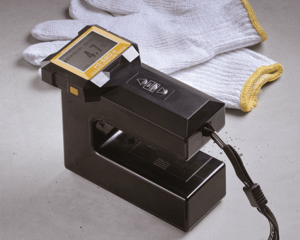 There are many reasons why accurate moisture measurement is critical for manufacturers. In addition to determining a product’s yield, moisture content also impacts a product’s consistency, performance, taste, durability, and shipping costs – as well as a number of other factors. It’s one of the most important measurements for manufacturers to take, and it’s crucial that their moisture measurement instruments provide accurate readings. Inaccurate moisture content measurement exposes your company to unnecessary financial, legal, and quality risks that can be easily avoided with a reliable moisture meter and proper testing methods.
There are many reasons why accurate moisture measurement is critical for manufacturers. In addition to determining a product’s yield, moisture content also impacts a product’s consistency, performance, taste, durability, and shipping costs – as well as a number of other factors. It’s one of the most important measurements for manufacturers to take, and it’s crucial that their moisture measurement instruments provide accurate readings. Inaccurate moisture content measurement exposes your company to unnecessary financial, legal, and quality risks that can be easily avoided with a reliable moisture meter and proper testing methods.
To help make you aware of these potential risks, here’s a list of the 8 biggest risks of inaccurate moisture measurement:
Weight
Put simply, the greater the moisture content of a substance, the greater the weight. And because many transactions are based on weight – including shipping and disposal costs – having an accurate moisture measurement is vital to ensuring that both parties get a fair deal. Because added moisture content makes a substance weigh more, sellers will want to maximize the amount of water in their products in order to maximize their profits. There is, of course, a maximum percentage value of how much moisture content their products are allowed to have, but as long as they don’t exceed that number, sellers can maximize their return on sales by maximizing their moisture content.
On the flip side, buyers will want lower moisture content in order to save on shipping expenses. Many substances can be dried for shipping and rehydrated later, which can help companies save hundreds of thousands of dollars annually – especially for bulk orders. Buyers also don’t want to overpay for a product that has too much water, so it’s important that they measure their incoming orders to make sure the seller stayed within the agreed upon limit.
Shelf Life
Moisture content has direct impact on a product’s shelf life. If moisture content is too high, certain foodstuffs can develop mold. If moisture content is too low, the product might get stale or crust. If these problems force a product to be pulled from the shelves before it’s purchased the loss will have to be absorbed by the retailer, manufacturer, or wholesaler.
Product Alteration
The presence of moisture can alter a product’s integrity. For example, if the moisture content in paint is too high, it won’t adhere to a surface or dry properly. Similarly, moisture content also plays an important role when mixing two substances together. If mixing isn’t done at the proper moisture levels, substances might have different reactions, which will impact performance, taste, look, and feel.
Quality
Product quality is the primary reason to measure moisture content. Moisture content determines a product’s characteristics, and can lead to altered performance, appearance, or taste. Even if moisture content levels are deemed adequate by production standards, they might not adequately meet the consumer’s expectations, lowering their satisfaction.
Legal Requirements
With many transactions being based on weight, both parties involved in the transaction will agree on a maximum moisture percentage before the sale. If a party fails to comply with these specifications, heavy fines can be levied and/or the substance won’t be accepted by the regulating agency. Likewise, certain government agencies, like the USDA and FDA, can penalize a company and deny it the right to sell their product. For example, certain moisture levels call for different storage requirements in food, and health agencies will require this information in order to allow your product to be sold.
Raw Materials
The inherent moisture content in raw materials could create processing challenges. For example, when using sand to create concrete, manufacturers don’t want wet sand caking up and blocking the process line. In this case, it might be beneficial for the manufacturer to partially dry the sand before feeding it through the process line.
Production Procedures
Maximizing your product quality takes more than just the know-how to create a product; you also need to know how to manage a process that maintains quality. Monitoring moisture content in all stages of production will ensure the most efficient processing. It’s much easier to maintain quality and production procedures when the incoming raw materials are the same every time, and pretreating your product before it’s on the line can help you ensure a consistent process and quality.
Financial Implications
Moisture management is key to optimizing your profitability and success. If your moisture measurement instrument can’t provide reliable, accurate measurements, you could be leaving a lot of money on the table. For example, if companies could add 1% more water to their products, their return on sales would also increase 1%. And with the historical average for return on sales being 4.7%, an increase to 5.7% would allow a CFO to say profits increased 15%....simply by working with us to optimize and automate your moisture measurement and control.
Taking accurate moisture measurements throughout the production process (from receipt of raw materials to the final product analysis) can significantly improve product performance, financial efficiency, and reduce other associated risks. Want to learn more? Download our free Moisture Measurement eBook below!



